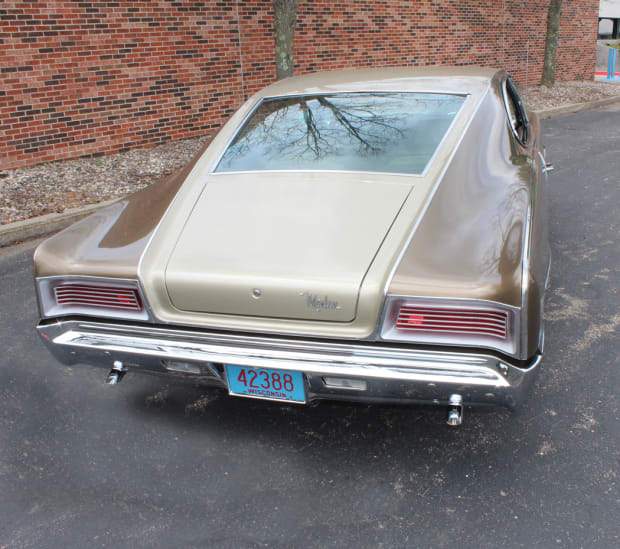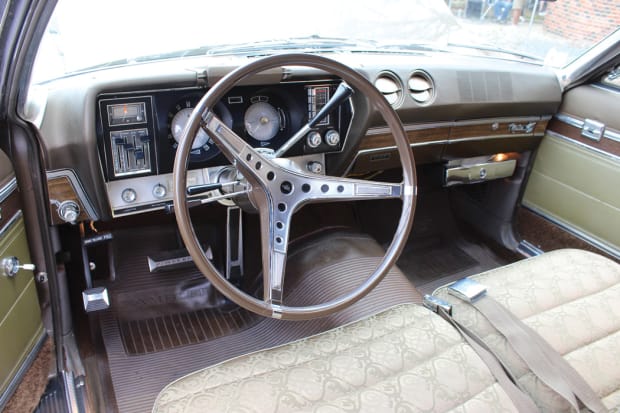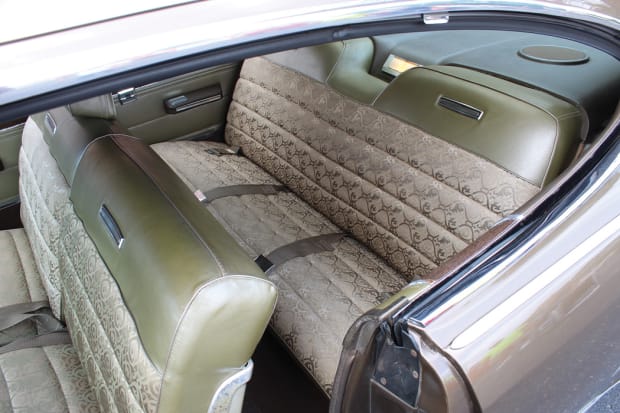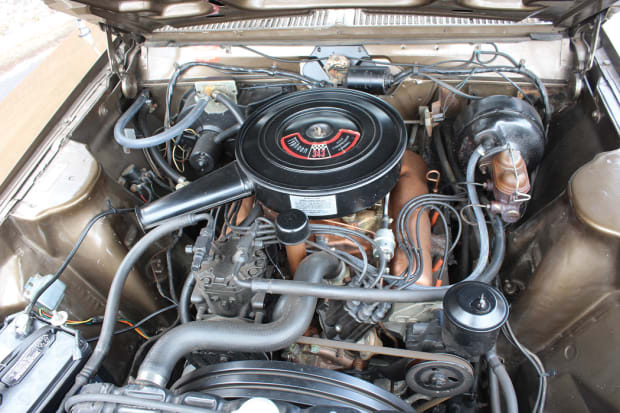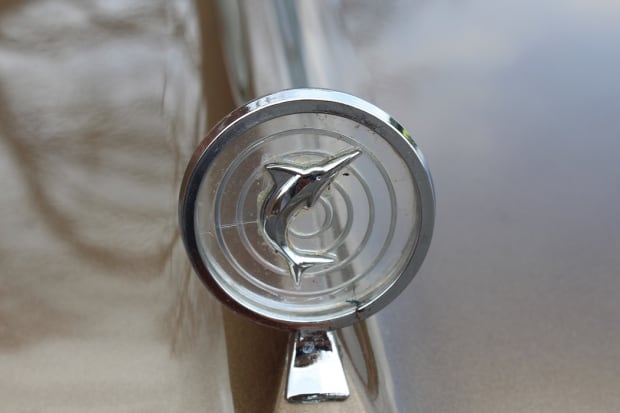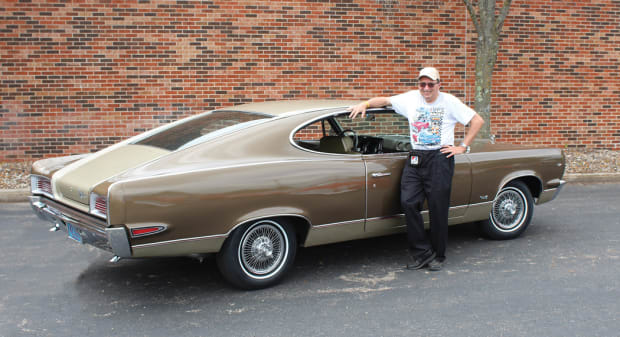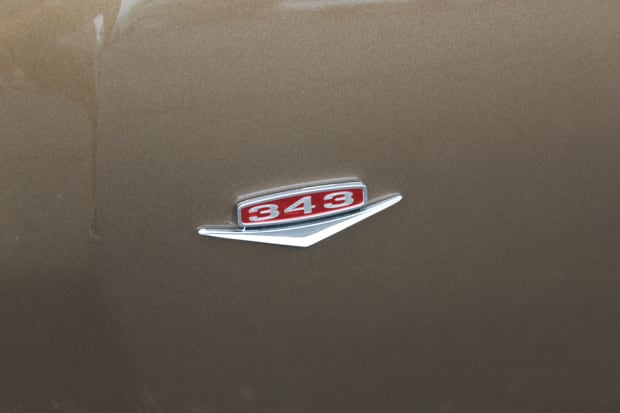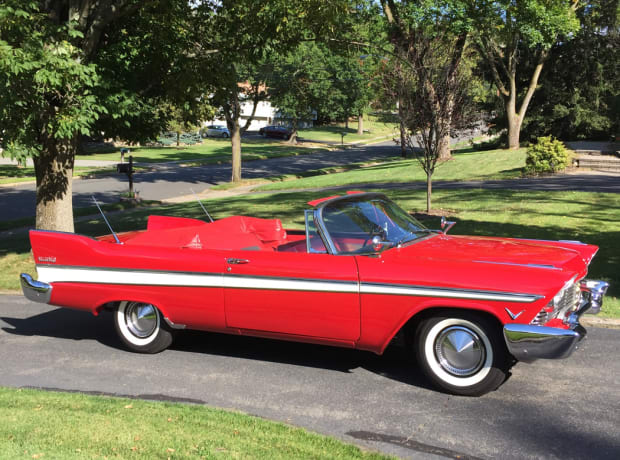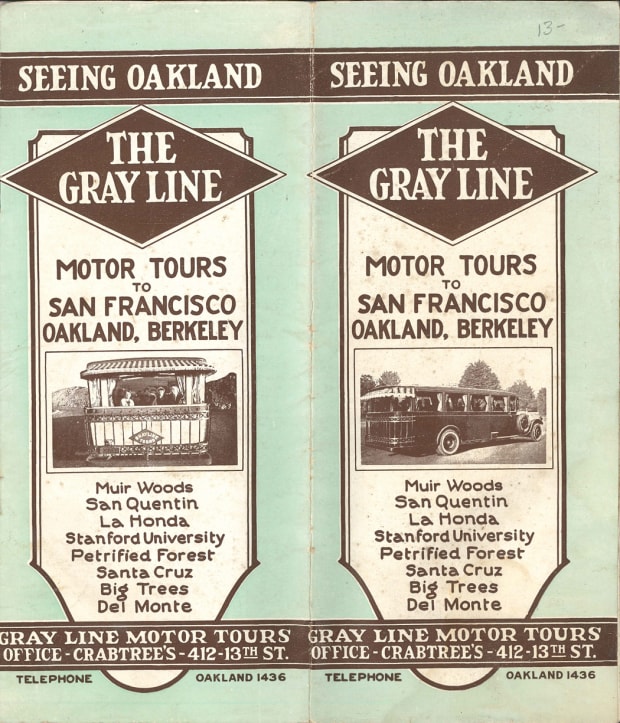A sweet ’66 Mustang GT has its happy owner seeing red.
“Someday” came a little early for Jenny Kramm.
“I always thought I would get an old car, I just didn’t expect to get an old car so soon,” laughs Kramm, gazing at her gorgeous 1966 Mustang GT fastback. “I felt like I went through the mid-life crisis before I was 30!”
The Mustang unexpectedly came in through the side door of Kramm’s life in 2010 when the last thing she was thinking about was buying a car built long before she was born. She had plenty of doubts at the time, but 12 years later, she’s liking her decision more every day.
“I had liked old cars since I was little, but I wasn’t planning on buying an old car,” says the resident of rural Ringle, Wis., “But then I was working a night shift and talking to a friend and she was saying, ‘One of my buddies is looking to sell his car.’ And I’m thinking it’s probably a piece of junk, but I said, ‘OK, here’s my email and have him email me with pictures and information on the car. And then when I got the email, I was like, ‘OK.’ I thought, ‘Oh, shoot, do I pass this up? Do I give it a try? I’m not really looking for a car at this time.’ I decided we’ll look at in person.”
“So we went and looked at it and he gave me a price and I decided to pass on it, and he said, ‘What could you do for a price?’ And I told him a number and he said, ‘It’s yours.’ He wanted it to stay in the states, otherwise he had a buyer in Australia. He was a local guy and he wanted to keep it in Wisconsin. It was kind of a fell-into-my-lap type of thing, and I decided I couldn’t pass it up.”
At that point, Kramm and her boyfriend, Jason Londerville, had a bit of a dilemma. They both had old cars — Londerville was restoring an older Chevelle — and they only had a one-car garage between them.
“We decided that this one had to go in the garage and we needed to go find some storage for his,” she chuckles.
The couple has put more than 10,000 miles on the Mustang in the past decade-plus, and the car still looks freshly restored. With blazing chrome and hot CandyApple Red paint, it is a stunning ride by almost anyone’s standards.
The car has been almost trouble-free for more than a decade, as well. It runs as good as it looks, except for a little black smoke occasionally when it starts.
“It smokes a little — I think the guy who owned it was a little hard on it,” Londerville notes. “We think there’s some rings that might be missed up on that bank, but it’s nothing we’re going to worry about now. It runs good.”
The biggest challenge in owning the Mustang so far for Kramm might be fending off offers to buy the car. She has had some persuasive guys try to get her to hand over the keys.
“We took it to a car show about a month after I bought it and I had people coming up to me saying, ‘Are you ready to sell this?’ I just bought it a month ago, I’m not ready to sell it yet!”
“Every year at [the Iola Car Show in Wisconsin], there is for sure one or two guys that come up and ask me if I will sell them the car. They know the car and know who I am …they come up with business cards [laughs]. Are you ready to sell this year?’”
A HOT CAR GETS HOTTER
Though it was far from the fastest car of the ’60s, the Mustang GT played a big role in building enthusiasm for muscle cars and rarely gets full credit for its contribution to muscle car history. As Car Life magazine put it, “Ford started a round-up of its state-of-the-Total-Performance art to produce the Mustang GT.” But before getting into the go-fast details, let’s review Mustang history a bit.
It is not often that a car comes along and gets to create its own market segment, but that is what happened when Ford introduced the Mustang sporty compact on April 17, 1964. Mustang initiated the all-new “pony car” segment, and the market for the cars was large and long lasting.
There is argument among purists over whether the Mustangs produced prior to September 1964 are 1964 1/2 or 1965 models. However, when it comes to the interesting and collectible GT equipment group, there can be no question, as it was introduced for the first anniversary of the Mustang’s introduction on April 17, 1965.
The Mustang had already become a desirable commodity. Its standard equipment included bucket seats. It had the immediately popular long hood, short deck look. At first it came as a sport coupe (two-door hardtop) and a sporty-looking convertible. In the fall of 1964, a fastback model called the 2+2 was added to the lineup. From the outset, the options list was important in marketing the Mustang. Buyers could add lots of appearance and convenience extras, plus some bolt-on high-performance hardware. However, being based on the low-priced compact Falcon, there was some room for improvement in the go-fast department.
Combining available mechanical features with new visual pieces made the GT package a fairly thorough upgrade. First, the buyer had to order an optional V-8 engine, which, at the time, included the 225-hp Challenger Special 289 at $157, or the high-performance 271-hp/289-cid engine for $430.
The GT option included quick-ratio steering, disc front brakes, chromed dual exhaust tips that exited through the rear valance panel, a new grille bar with fog lamps built in and GT instrumentation — which replaced the Falcon-based instrument panel with five round dials. Throw in GT badging and lower body striping and you had a bargain for around $150.
For 1966, little change was made to Ford’s hot-selling Mustang. You don’t mess with success. Minor updates were all that were needed. A revised instrument panel that looked less like that of the Falcon was used. The grille retained its now-familiar shape, but had the Mustang horse emblem “floating” in the “corral” in its center, with no horizontal or vertical dividing bars. A wind split ornament was added at the end of the “cove” on the body sides.
Federally mandated safety equipment that was formerly optional—including seat belts, a padded instrument panel, emergency flashers, electric windshield wipers (with washers) and dual padded sun visors—were made standard features. To cover the added cost of these must-have items, prices increased $44 for the two-door hardtop, $18 for the 2+2 and $49 for the convertible.
The GT Equipment Group continued to be available in 1966 as a $152.50 option package for Mustangs with high-performance V-8 power plants. The GT Equipment Group included a dual exhaust system, front fog lamps, special body ornamentation, front disc brakes, GT racing stripes (in place of rocker panel moldings) and handling package components. The handling package (normally $30.84 extra by itself) included increased-rate front and rear springs, larger-diameter front and rear shock absorbers, a steering system with a 22:1 overall ratio and a large-diameter stabilizer bar.
The Mustang’s base V-8 engine for 1966 was the Code “G” 4.00 x 2.87-inch bore and stroke 289-cid with a 9.3:1 compression ratio and an Autolite two-barrel carburetor. It generated 200 hp at 4,400 rpm. The performance options included the Code “A” 289-cid Challenger V-8 with a 10.1:1 compression ratio and four-barrel Autolite carburetor, which produced 225 hp at 4,800, and the Code “K” Challenger High-Performance V-8. This version of the “289” featured a 10.5:1 compression ratio, a four-barrel Autolite carburetor and solid valve lifters, which helped it to make 271 hp at 6,000 rpm.
A Mustang 2+2 with the Challenger High-Performance V-8 could do 0-to-60 mph in 7.6 seconds and needed about 15.9 seconds to make it down the quarter-mile.
The GT package proved to be twice as popular as it had been in 1965 and its sales increased from about 15,000 the earlier year to approximately 30,000.FROM WEST COAST TO MIDWEST
According to the history that was passed on to Kramm, her ’66 was a California “barn find” before it ever touched Wisconsin soil. It isn’t clear how long the car sat, or how many previous owners it had, but the previous owner brought the Mustang from California and had it restored at Kuyuth’s Body & Custom in Stratford, Wis. The car was obviously repainted and given new interior upholstery. The 289 V-8 was punched out to push the horsepower up closer to 325 hp and had a slightly hotter cam installed, along with some growling Flowmasters. Otherwise, the GT is stock, down to its factory red color.
According to the documentation Kramm received, the car was originally ordered with the 289 four-barrel, four-speed and front disc brakes. It has the Interior Décor Group with “Pony” interior and console, fog lamps, GT Rally Pac and GT rally wheels.
“It was almost like a points restoration. You look under hood and they put all the correct markings on it and everything,” Londerville notes. “There is an aftermarket radio in the trunk.”
“But the dash radio still does work!” Kramm pointed out. “It’s AM/FM radio, which is a little uncommon for that year.”
Even after having the car for 12 years and taking it to plenty of shows, Kramm knows the question is still coming: “Is that your car?” She doesn’t take offense. She knows she is often the only female car owner at the shows and cruises she shows up at, and certainly the only one that usually shows up in a hot red Mustang. “It’s a lot of fun to see people’s reactions, especially if I’m driving. ‘Is that her car, or did she steal it?’ That type of thing,” she says.
“I got it a lot when we went to car shows. People would be talking to him and asking, ‘Who’s car is this.’ And his sister had a sweatshirt made for me that said, ‘Not my boyfriend’s car.’ Nobody believed that I could have a car like this.’ I think sometimes it gets awkward, because I didn’t work on it. I didn’t make it look like this, unfortunately. I got it like this. So sometimes people will start talking over my head [laughs].”
Kramm says after a dozen years of good times with the car, she can’t ever see herself parting with it “unless something horrible happened.” These days she says she’s just as happy riding in the passenger seat and letting Jason drive as she is taking the wheel herself. “I really like riding in it, so I can enjoy the ride. Plus it’s got no power steering, so that’s kind of a lot sometimes, too. You baby it a little bit, and you go out driving and you’re cautious, because you don’t know about everybody else on the road.
“You don’t want anything to happen to it, because you’ll never get another one just like it.”
If you like stories like these and other classic car features, check out Old Cars magazine. CLICK HERE to subscribe.
Have you ever wondered what your classic ride is worth? Old Cars has you covered with the Old Cars Report Price Guide. We are your source for unbiased and real-world pricing. Subscribe today and find out what your car is really worth! CLICK HERE to subscribe.
View the original article to see embedded media.
*As an Amazon Associate, Old Cars earns from qualifying purchases.




